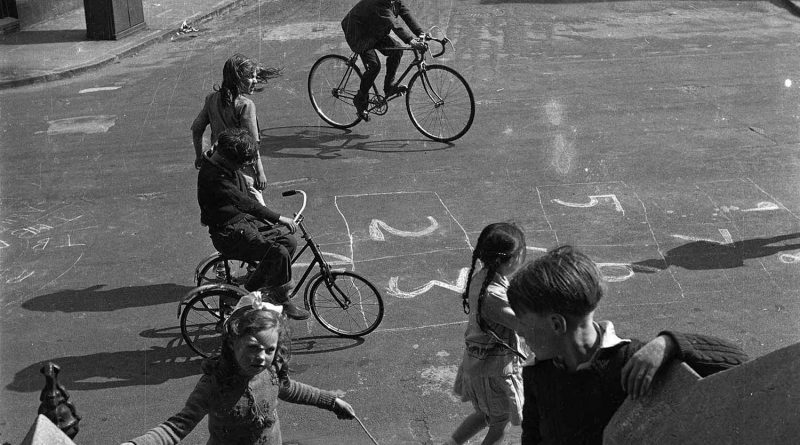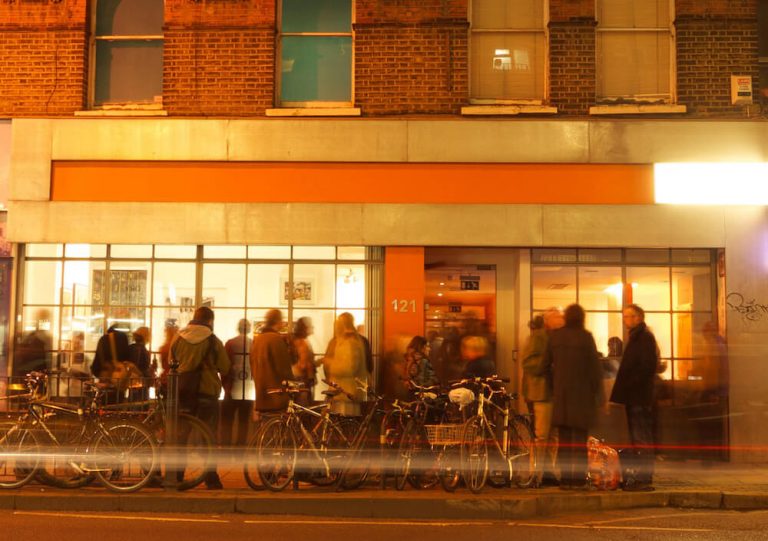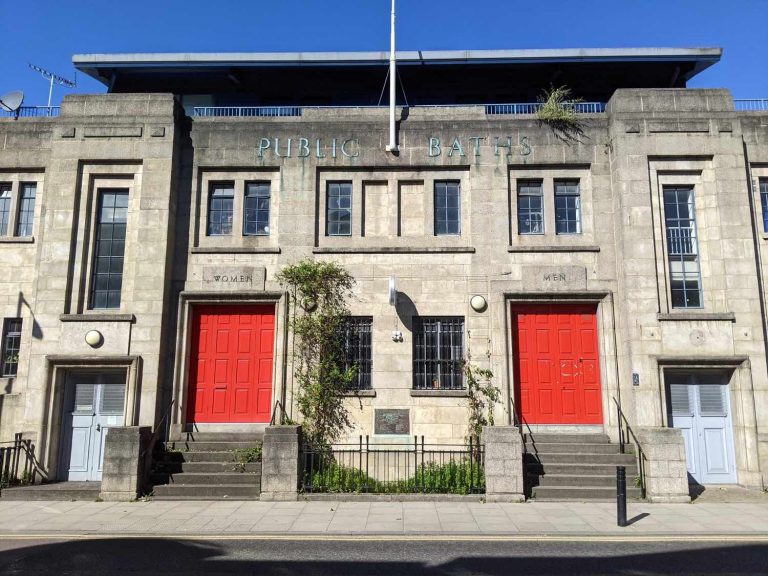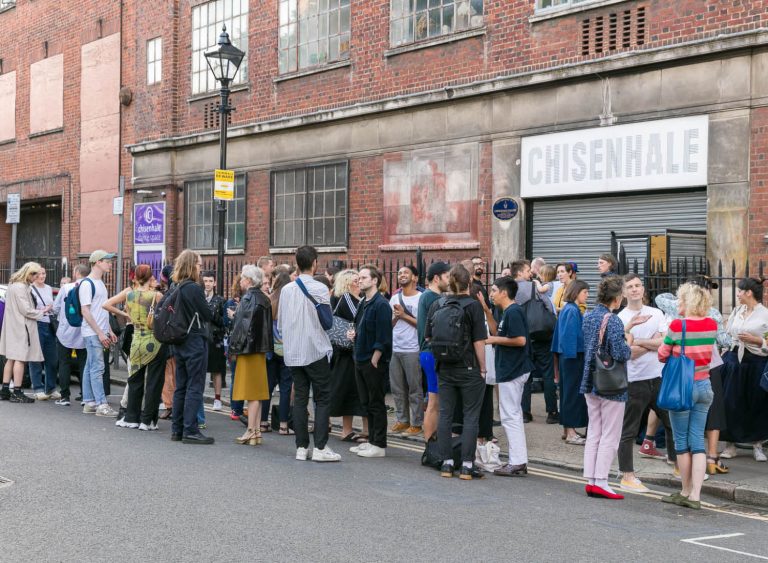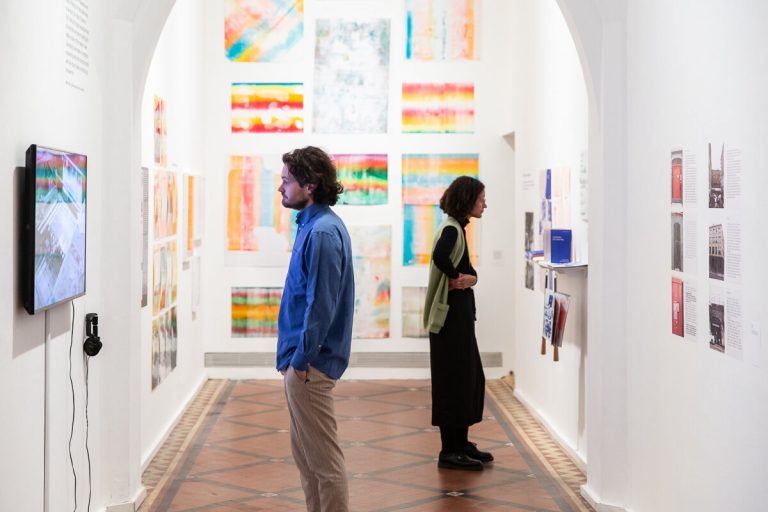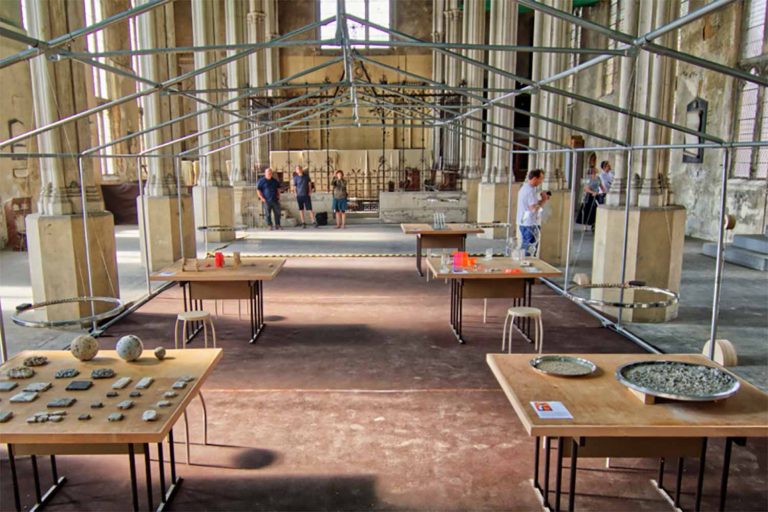Nigel Henderson’s home in Bow and the legacy it preserves
How the residents of Henderson’s Chisenhale Road home are continuing the photographer’s legacy on the East End streets he documented
Have you ever wondered who once lived in your house? Pictured how they might have arranged the furniture, or what colour they painted the walls?
Like most of us, when Jim and Carolyn Clark moved to Chisenhale Road, Bow, in 1999, such thoughts hadn’t crossed their minds.
The three-storey Victorian terrace house sits just down the tree-lined street from Chisenhale Art Gallery, with a garden backing onto the Hertford Union Canal.
About a year after moving in, Carolyn returned from work one day to find three people – a man, a woman and a young lad – scrutinising the front of the house.
‘They were looking at the house really closely,’ recalls Carolyn: ‘So I went straight up to them and asked them if they were looking for someone.
‘It turned out that they were doing research for a book about the photographer Nigel Henderson … they were the first people who alerted us that he used to live there,’ she says.
Visual artist and photographer, Henderson moved to the house with his wife and family after the Second World War in 1945 over half a century before Carolyn and Jim.
Henderson was a member of the Independent Group, a collective group of artists and critics who challenged the establishment in the early 1950s and wanted to bring pop culture into the world of high art.
From street sweepers to hop-scotching children, Henderson took candid shots of working-class East Enders going about their daily lives.
The founder of the Independent Group, Eduardo Palozzi, was a good friend of Henderson’s and lived with the family – in what is now Carol and Jim’s bathroom – in the early 1950s.
Henderson found a way of being amongst people but not being in direct contact and found this a very creative and productive way of engaging with people
Victoria Walsh, art professor
Henderson is primarily known for his documentary-style photographs of working-class life in the East End, many of which were shot from the master bedroom window and the top of the front steps which look down onto Chisenhale Road.
According to Art Professor Victoria Walsh, Henderson fell into photography, and though he had some formal training later on, his approach was really one of experimentation.
In The Tate’s Animating the Archives series, Walsh says Henderson felt suffocated by his upper-class upbringing. His mother’s involvement in the Bloomsbury Set, a group of early twentieth-century English intellectuals, philosophers, and artists, acclimatized him to progressive thinking.
Concerned with documenting social issues and the everyday experiences of ordinary people, Henderson inadvertently created a document of post-war London in the East End.
As Walsh points out: ‘People lived on the streets in the East End in the sense that most of their lives, their daily lives, were acted on the stage set as Henderson experienced it.’
‘He found a way of being amongst people but not being in direct contact and found this a very creative and productive way of engaging with people,’ she adds.
A little while after discovering their home’s former inhabitant, Carolyn and Jim were at an exhibition about areas of London that have been artist colonies throughout the centuries when they spotted their house.
‘I’m not so keen on art exhibitions as Jim,’ admits Carolyn: ‘So I was whizzing through it ahead of Jim, and I suddenly saw an image of the wall in our house! It was such a surprise.’
Carolyn a historian and Jim a community artist, both with longstanding ties to the East End, it seems fated that they would be the ones to reside in Henderson’s old home.
Drawn to Bow by Carolyn’s love of canals, their garden backs onto the Hertford Union Canal, and since buying the house Carolyn has written a book of oral histories of East London’s waterways.
‘Carolyn has always been interested in the world around us and would always have gone into that sort of work, but finding out that Nigel Henderson lived in our house was a real catalyst for various projects we’ve done in the area,’ says Jim.
Partly thanks to Carolyn and Jim, Henderson’s work is widely recognised by people now living in the streets that he documented.
Our neighborhood no longer has knife grinders and barrel organs like Henderson’s world. Young East Enders may not even know what a rag-and-bone man is. However, his photos still shape how people from Bow perceive our area’s history and connect with its past residents.
At a street party on Chisenhale Road Carolyn and Jim organised an exhibition of Henderson’s photographs which they said appealed to people of all age groups.
‘It wasn’t just people saying ‘I remember that,’ they were also interested in what the area used to look like. So I think there’s an interest because things change so fast and when you live in an area you usually want to know more about it,’ says Carolyn.
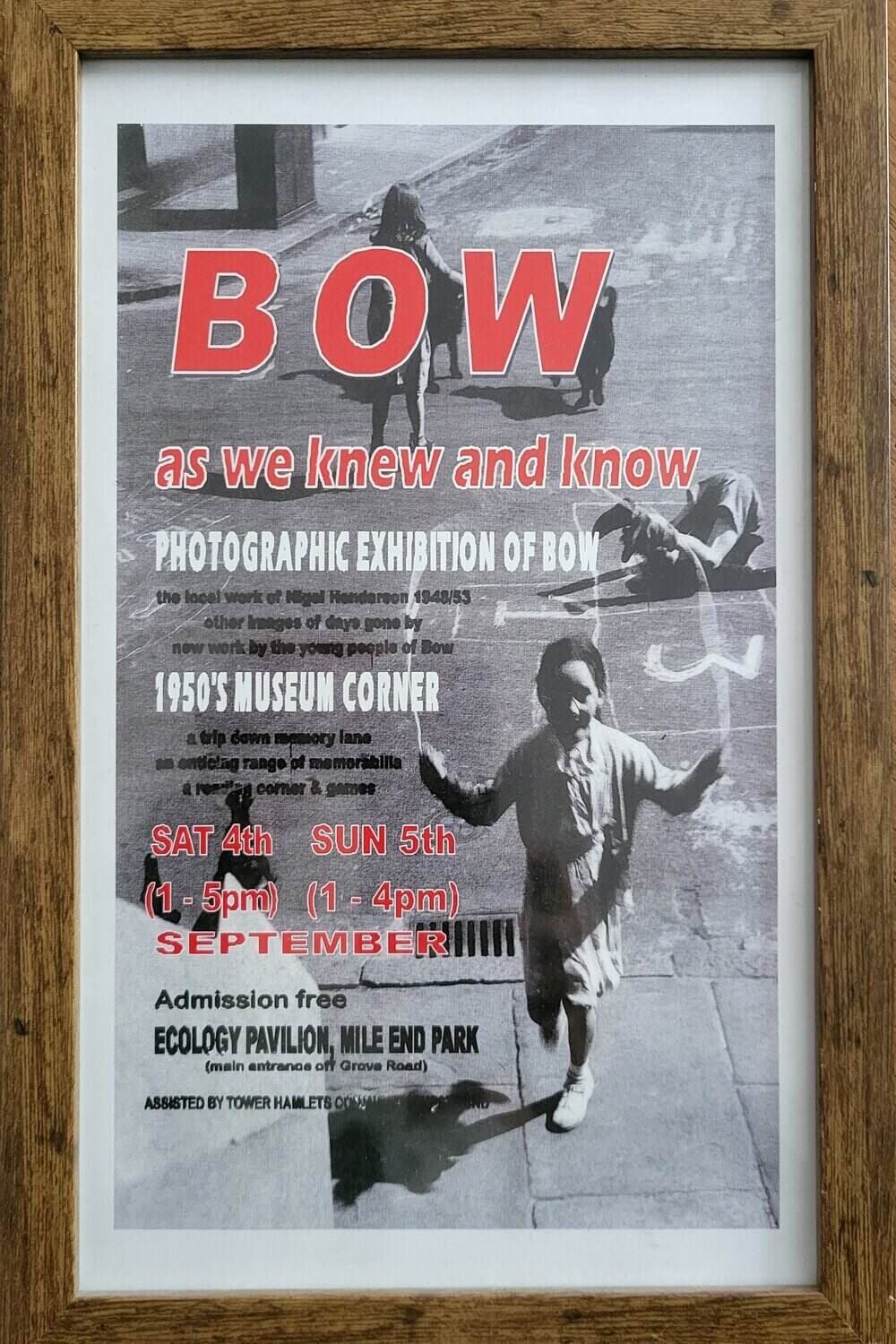
As a result of Walsh’s book on Henderson being published, in 2003 Jim organised a photography project called ‘Bow as we knew and know,’ inviting 25 local children to take photos of the area using Henderson’s images as inspiration.
The photos taken by the young people of Bow were displayed alongside Henderson’s work in an exhibition at the Ecology Pavilion in Mile End Park, documenting how the area has changed since the 1950s and the ways history is present in the world around us.
The couple was also involved in an exhibition at the Museum of the Home – then called the Geffrye Museum – that featured six households across the UK reflecting on their homes as places where other people once lived.
Examining the past through the personal realm of the home, the exhibition uncovered the physical things from the past you inherit through your home, as well as knowledge of previous inhabitants’ lives.
A legacy of Pallozzi’s time living on Chisenhale Road, Carolyn and Jim found a photograph of his wallpaper in the house, though they can’t identify in which room the famous lodger had left his mark.
‘I’ve got to say it’s a real relief to me it’s not there anymore,’ laughs Carolyn: ‘We’d have to keep it, but it’s pretty full-on. It’s all big black and white abstract shapes and images, which is probably back in vogue now.’
As well as Paolozzi, Henderson collaborated with Alison and Peter Smithson, prominent twentieth Century architects behind Poplar’s Robin Hood Gardens. Though it has since been demolished, the council estate was inspired by a collectivist vision to create ‘streets in the sky’.
Influenced by similar democratic thinking, Henderson was concerned with the importance of creating public play spaces for children and much of his work features children playing in the streets of the East End.
As ordinary people are increasingly pushed out of East London by rising rents, conversations about public ownership are pertinent today and the concerns of Henderson and his contemporaries seem more relevant than ever.
And Henderson’s legacy? A number of young people on Chisenhale Road have suggested that the couple have a blue plaque erected marking the place where he lived.
Though Jim and Carolyn haven’t jumped at the idea, it’s worth keeping your eyes out next time you walk down Chisenhale Road just in case.
If you enjoyed reading this piece you might like our article about local artist Ed Gray, painting a tapestry of the East End.

